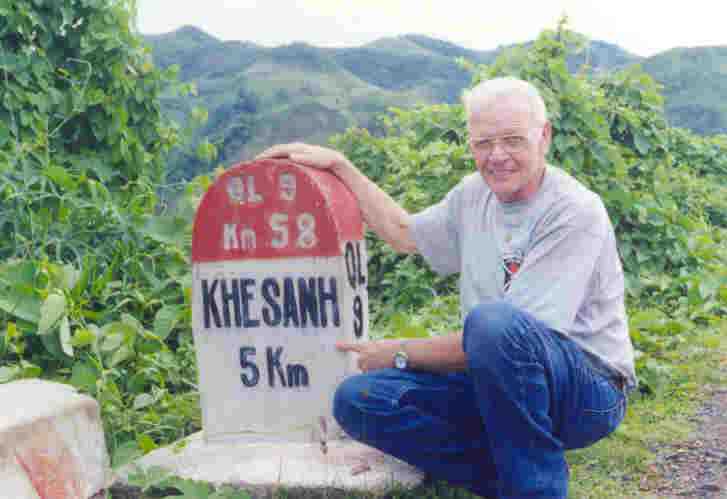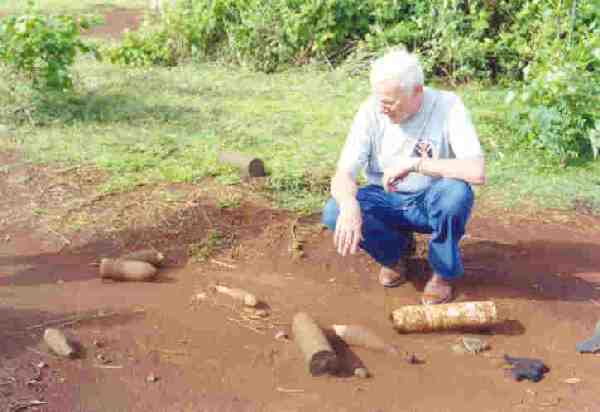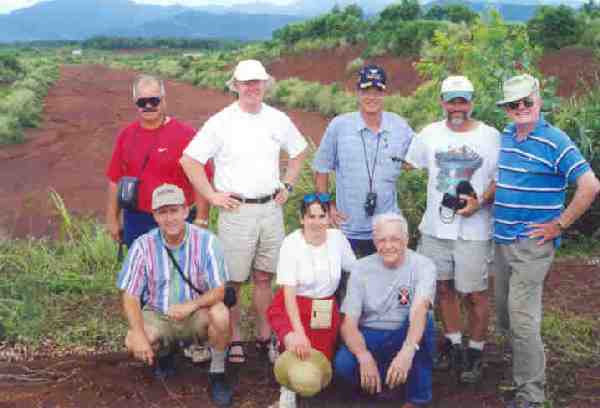
|
For the Marines, "The End of the Line" was a remote and isolated garrison known as Khe Sanh.
The Siege of Khe SanhThis ammo dump contained eleven thousand rounds of ordnance that began burning. Red-hot artillery and recoilless rifle rounds were hurled into nearby trenches. CS tear gas was ignited and filled the entire area with gas as thick as fog. About 10:00 A.M. the fire set off a large quantity of C-4 plastic explosives and other explosives. At the airstrip all navigational aides were destroyed or damaged, living quarters for the Marines air group were destroyed, the control tower was rendered inoperative, and the runway was cratered. All this on the first day of incoming rocket, artillery and mortar attacks that would continue for the next 76 days.
In a sense both sides besieged each other. The Marines could only be supplied by air and could not have evacuated the base without sustaining unacceptable casualties. The North Vietnamese Army (NVA) were trapped by their military and political goals, whatever they might have been, and by the greatest application of U.S. air power directed at them in history.
The mess halls were immediately secured. In the atmosphere of flying metal it would not do for two hundred Marines to congregate in one place. C-rations were issued and the men took their meals in their bunkers. The rat population began to take off and Khe Sanh took on the look of a "shanty slum on the outskirts of Manila". Continuous aerial bombardment, shelling and digging and bulldozing of positions filled the air with red dust. Smoke filled the air, smoke from incoming, from diesel generators, from burning latrines, from burning ordnance and from trash fires. Water was restricted and few were able to bathe regularly. The monsoon rain served to drive the rats inside the bunkers.
By March 6, Saigon reported that NVA strength around Khe Sanh had been reduced, from a former level of possibly 35,000, to a level of 6,000 to 8,000 NVA troops. On April 9, for the first time in weeks, not one shell crashed into the combat base.
Army units entered the base, the first to arrive by land in months. They stared at the Marines in disbelief; some wore beards, all needed haircuts, all were exhausted, their clothes were filthy and tattered. The 1st Calvary had the attitude that they had "relieved" the Marines of Khe Sanh, that they had "broken" the NVA siege. The Marines largely ignored them.
In June 1968, it was announced that Khe Sanh was being abandoned. The Marines proceeded to dismantle the base, slashing sandbags, blowing up their fortifications, filling in trenches with bulldozers, hauling away everything of possible use to the enemy. The last Marines left on July 6. In their leaving, both sides turned the base over to the rats, whose population likely expanded still further now that the monsoon had ended, air and artillery strikes ceased, and there was no human population to harass them. The rats were free to police the remaining ration scraps within the base and the huge quantity of body parts that must have lay without. And when this food supply was consumed they too would depart Khe Sanh.
Khe Sanh, June 1998

|

|
The former airstrip taken from the hill at the West end of Khe Sanh. In the distance the plateau ends and the land falls away sharply to the valley below.

|
Left to Right Standing:
Dennis Mittleider, served with the 3rd. Marine
Division in Vietnam. His son was also in
the Marine Corps and was
serving as a Security Guard for the Embassy in Hanoi, Troy
joined us for a few days
of our tour of Vietnam. Troy was a splendid Marine as are all
those chosen for Embassy
duty.
Jay Lillie, Colonel USMC(Ret), was an A-4
pilot with MAG-11 at Chu Lai.
John "Ace" Hunt, Former Cpl. USMC, "Ace" had
three H-46's shot out from under him
in Vietnam. He fell
out the side crew door of the fourth from 600' above Marble Mt..
In spite of his scars and
pain, "Ace" kept up the whole trip.
William "Bill" Maloney, LtGen, USMC(Ret),
Bill was the former CO of MAG-36 in the
Chu Lai area.
Left to Right
Kneeling:
Marion "Struk" Sturkey, former Capt. USMCR
and author of "Bonie Sue a Marine Corps
Helicopter Squadron in
Vietnam.
Beth "Honorary Marine" Lilly, wife of Col.
Jay Lillie, she also proved her metal and won
the nickname of "Honorary
Marine" on the trip.
Frank "The Candy Man and/or Uncle Frank" Gulledge,
Jr, Maj. USMC(Ret)
Article by,
Franklin A. Gulledge, Jr.,
Major USMC(Ret)
Album Index or (881) Album Index or Home